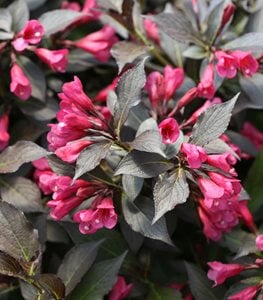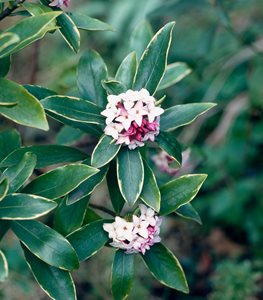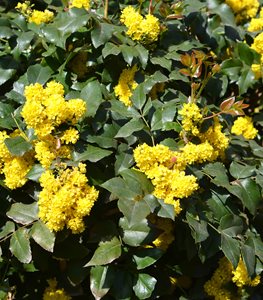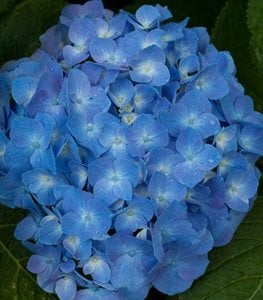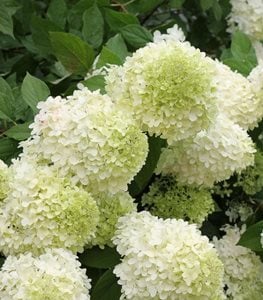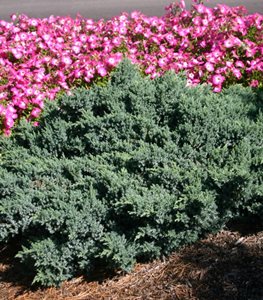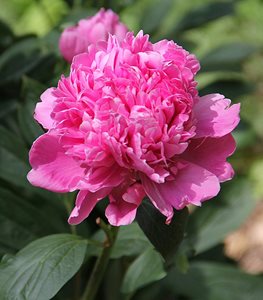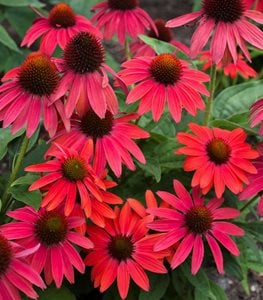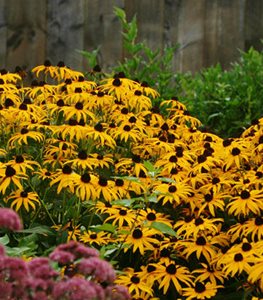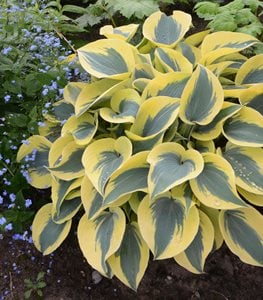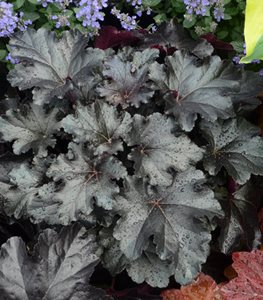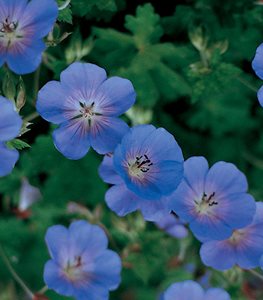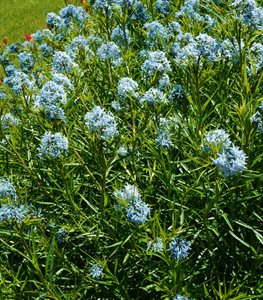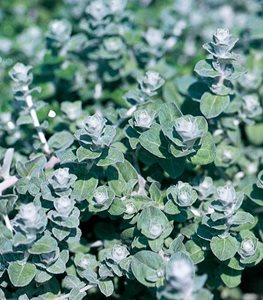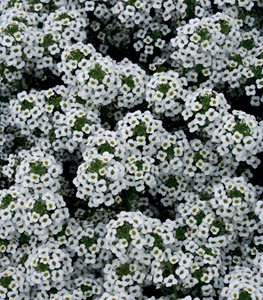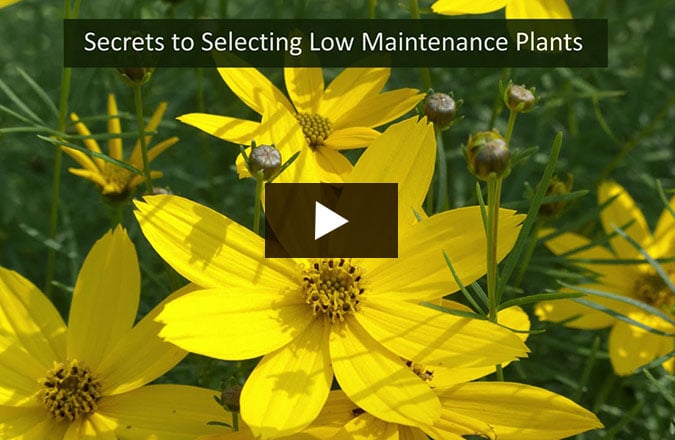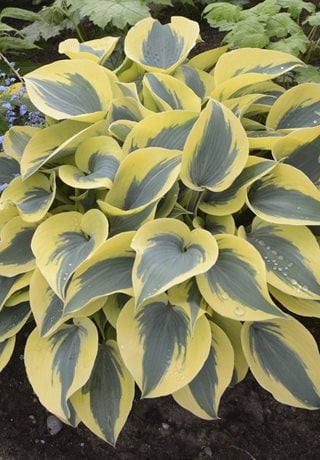21 LOW-MAINTENANCE PLANTS
Discover 21 of our favorite low-maintenance shrubs, perennials, annuals, and groundcovers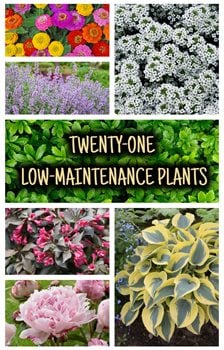
Plants can be both beautiful and easy care if you understand the factors that create additional work and balance that knowledge against what you personally enjoy. For example, if you like the meditative aspect of deadheading spent flowers, then avoiding perennials that need this attention will not be important, as it is not a chore to you.
When selecting plants that are lower maintenance, the first step is to ensure you are following the “right plant-right place” principle. Less than ideal conditions, such as growing a sun-loving shrub in shade, will result in a plant that may survive but won’t thrive, increasing the potential for it to succumb to disease, to develop longer, weaker branches and therefore need additional pruning to manage its shape and size.
Seek out plants or varieties that don’t need staking, regular deadheading, frequent dividing, complicated pruning or excessive watering so that you can relax and simply enjoy your garden. Listed below are some of our favorites.
On this page: Shrubs | Perennials | Annuals | Groundcovers
Learn more about designing a low-maintenance garden.
LOW-MAINTENANCE SHRUBS
Weigela
With many varieties offering both colorful foliage and tubular blooms that attract hummingbirds and bees, weigela may be one of the most hard-working plants in your garden. Whether you need a tall variegated shrub for the back of the border, or a compact dark-leaved variety to frame a pathway, there is sure to be a weigela to suit.
Pruning is easy — and optional. If you feel the need to prune for size or shape, simply do so immediately after flowering so as not to sacrifice the following year’s blooms. Other than that, these garden stalwarts will thrive in full sun and average garden soil, are drought tolerant once established, and are rarely bothered by deer.
Zones:
4-8
Height/Spread:
2 to 6 feet tall, 3 to 5 feet wide
Plants to try:
Spilled Wine® (pictured), Czechmark Trilogy®, My Monet®, Tuxedo™, or Maroon Swoon®.
Spirea
Like weigela, these deciduous shrubs range in size from front-of-the-border beauties to mid-size, mounding shrubs that make a colorful statement whether planted singly or en masse. Many varieties of spirea offer exceptional foliage that changes color during three seasons, as well as summer flowers that attract bees and butterflies.
A quick trim with shears after blooming will keep the shrub tidy, but otherwise these shrubs are easy care. Plant in average, moisture-retentive garden soil in full or part sun. Deer may occasionally nibble new shoots, but rarely do significant damage.
Zones:
3-8
Height/Spread:
2 to 7 feet tall, 2 to 6 feet wide
Plants to try:
Double Play® Gold, Double Play® Red, Magic Carpet, Little Princess, , Double Play® Blue Kazoo, or Firegold.
Note: Check with your local agricultural extension office to ask if spirea are invasive in your area before planting.
Winter Daphne
Evergreen, easy care, beautiful yellow-edged foliage, and intensely fragrant white blooms in winter— what more can you ask for? Given the right conditions of full sun (in cooler climates) or filtered sun and well-draining soil, winter daphne (Daphne odora 'Aureomarginata') will reward you a hundredfold. Be sure to cut a few branches to bring indoors during the winter. A single cluster of blooms will perfume an entire room. No pruning is necessary but be sure to plant this shrub where it has room to spread, as daphne do not transplant easily.
Zones:
7-9
Height/Spread:
4 feet tall and 6 feet wide
Oregon Grape
Native to the Pacific Northwest, Oregon grape (Mahonia spp.) is an evergreen shrub, typically with holly-like leaves and yellow shuttlecock flowers in winter that are followed by edible blue berries. The blooms are especially favored by overwintering hummingbirds.
Tolerant of dry shade, these are a great solution for growing under towering conifers yet they also do well in a more open aspect and morning sun.
From the low-growing, creeping mahonia (Mahonia repens) that will create a ground-covering carpet, to varieties that reach 8 feet or more, you are sure to appreciate these as an easy-care addition to your garden. There are several species and varieties to select from, enabling gardeners to enjoy these in a wide range of climate zones.
Zones:
5-11
Height/Spread:
12 inches to 10 feet tall, 2 to 8 feet wide
Plants to try:
‘Charity’, ‘Arthur Menzies’, ‘Soft Caress’, creeping mahonia, or ‘Marvel’.
Repeat-Blooming Hydrangeas
Among the most popular summer-blooming shrubs, hydrangeas have stunning flowers that are suitable for fresh floral arrangements as well as drying. Yet many need complicated pruning to bloom well or a veritable “cat’s cradle" of supports to hold the heavy stems upright.
Good news — there are hydrangeas that will satisfy your cravings, yet be significantly less work. Repeat-blooming hydrangeas produce flowers on both last year’s stems (known as the old wood) as well as this year’s stems (new wood), which in simple terms means you can’t go wrong with pruning.
Zones:
4-8
Height/Spread:
3 to 5 feet tall and wide
Plants to try:
Let’s Dance® series, Tuff Stuff™ series, Next Generation® Pistachio, Endless Summer®, Summer Crush™ and BloomStruck® (gorgeous dark stems on the latter are a bonus).
PeeGee Hydrangeas
PeeGee hydrangeas (short for Hydrangea paniculata 'Grandiflora'), are those with the white ice-cream cone-type flowers that typically fade to pink. The beauty of these is the easy pruning — simply cut all the stems down to a few inches in late winter. Better still, cut them down to about 10" and leave that low twiggy support to help steady the new canes as they grow. As the shrubs mature, the canes become stronger and will flop less than the thin, spindly growth of newer stems, so some patience is needed initially.
Zones:
3-8
Height/Spread:
3 to 8 feet tall and wide
Plants to try:
Fire Light®, QuickFire®, Little Quick Fire®, and ’Limelight’.
Blue Star Juniper
Not your ground swallowing, grandmother’s juniper, Blue Star is well behaved and a much better size for today’s gardens. Evergreen conifers are always a welcome addition to the landscape, yet to be considered low maintenance they also need to be drought tolerant, disease resistant, and not need pruning for either shape, size, or optimal color. This variety meets all those criteria and more. The steel-blue needles take on a purple cast in winter; and like all junipers, it shows excellent deer and rabbit resistance. Planted singly or in groups, this low-growing conifer is sure to become a favorite.
Zones:
4-8
Height/Spread:
2 to 3 feet tall and 4 feet wide
See more low-maintenance shrubs
LOW-MAINTENANCE PERENNIALS
Ornamental Grasses
Finely textured grasses can transform a traditional mixed border, adding movement and catching the light, while airy seed heads create a magical transparent effect. Your hardest decision may be in selecting just a few, since varieties exist in shades of green, blue, burgundy, gold, and bronze, and range in height from just a few inches to several feet. There are evergreen selections, as well as herbaceous and annual varieties, and many of the grass-like sedges thrive in moist soil, while true prairie grasses prefer drier soils. Apply the “right plant-right place" principle and you can’t go wrong.
Zones:
3-11
Height/Spread:
2 inches to 8 feet tall and 4 inches to 4 feet wide
Evergreen varieties to try:
Blue fescue, blue oat grass, New Zealand hair sedge, 'Everillo' Japanese sedge, or black mondo grass
Herbaceous varieties to try:
Japanese forest grass, Karl Foerster feather reed grass, or 'Shenandoah' switch grass
Annual varieties to try:
Vertigo purple fountain grass (pictured), or Baby Tut umbrella grass.
Peony
Who can resist cupping a blowsy peony bloom in their hands and inhaling deeply to enjoy their exquisite scent? This old-fashioned favorite is positively swoon-worthy for the flowers alone, yet the deeply cut foliage is equally attractive and has rich fall color.
While peonies do take a little more work than most of the other lower maintenance choices listed here, they are worth it. On the plus side, they are deer resistant, drought tolerant once established in average-rich, moisture-retentive soil, and thrive in full or part sun. When the spring growth is approximately 12 inches tall, add a peony cage or similar structure over the top, to support the stems as they grow. Without this, the flowering stems will collapse under the weight of the blooms. It’s also best to deadhead the spent blooms and remove fallen petals from the lower foliage to avoid fungal disease. Cut back the foliage completely in fall.
Zones:
3-7
Height/Spread:
3-4 feet tall and wide.
Plants to try:
'Coral Charm', 'Sarah Bernhardt' (pictured), 'Bowl of Beauty', or 'Shirley Temple'
Coneflower
A staple of the sunny, late summer garden, coneflowers (Echinacea spp.) bring a blast of bold color to the border, the open blooms being a favorite of butterflies and bees. It is also a great choice for the lazy gardener, as it is better not to cut this back in fall, but rather to leave the seed heads standing as they provide a tasty treat for birds during the colder months.
Drought tolerance and deer resistance are bonus features of this perennial, but emerging shoots may need to be protected from hungry rabbits in spring.
Hardiness and longevity of some of the newer varieties seems to be variable, so seeking the advice of a local nursery professional may be wise.
Zones:
4-9
Height/Spread:
16 inches to 3 feet tall, up to 2 feet wide
Plants to try:
Sombrero Hot Coral, White Swan, 'Magnus', Kim’s Knee High, Summersong™ Firefinch™ (pictured), or Cheyenne Spirit
Black-Eyed Susan
A garden without black-eyed Susan (Rudbeckia) just doesn’t seem complete. Bold, golden-yellow daisies with a chocolate central cone are a cheerful late-season highlight, thriving and blooming both in full sun and partial shade. Drought tolerant, deer resistant, rabbit resistant, and easy care makes these ideal for busy gardeners as well as beginners. Like coneflowers, it is best not to tidy up the seed heads in fall, but to leave them as a food source for birds. If they have one fault, it is that they spread easily by rhizomes, but any extra plants are easily removed and shared with friends.
Zones:
3-9
Height/Spread:
2 to 3 feet tall, 1 to 2 feet wide
Plants to try:
‘Goldsturm’ (pictured) or Little Goldstar
Hosta
From miniature to monster sized, there is a hosta for every area of your shade garden. Loved for their bold foliage, there are varieties with puckered, quilted, strap-like or cupped leaves, while colors range from palest yellow to rich blue-green with many multi-hued options. For gardeners seeking lower maintenance plants, hosta are a winner as they will continue to thrive, getting steadily larger, even without being divided. Simply plant in average garden soil and bait for slugs and snails or spray for deer and rabbits should those critters be a nuisance in your garden.
Zones:
3-9
Height/Spread:
6 inches to 4 feet tall, 6 inches to 6 feet wide
Plants to try:
'June', Shadowland® ‘Autumn Frost’ (pictured), ‘Krossa Regal’, or ‘Revolution’
Coral Bells
Evergreen and semi-evergreen perennials that are easy care and that thrive in either sun or shade are in demand — and many of the newer varieties of coral bells (Heuchera) fit the bill nicely. They also have colorful foliage and hummingbird-attracting flowers. Typically, they thrive in rich, well-draining soil, but light requirements may vary, so be sure to read the label. Seek the recommendations of a local nursery professional for time-tested varieties that do well in your area or try one of these varieties that we especially like.
Zones:
4-9
Height/Spread:
8 to 10 inches tall (without flowers), 10 to 30 inches wide
Plants to try:
Primo® ‘Black Pearl’ (pictured), Dolce® ‘Cherry Truffles’, ‘Berry Smoothie’, or ‘Root Beer’.
Catmint
Aromatic foliage, long-lasting blooms, drought tolerance, and deer resistance — catmint (Nepeta spp.) is a good choice for gardeners seeking to reduce maintenance without sacrificing beauty or color. Taller varieties benefit from a quick haircut after blooming; but otherwise, just stand back and let it grow, cutting it down to the ground in fall.
Zones:
3-8
Height/Spread:
12 to 36 inches tall, 18 to 24 inches wide
Plants to try:
'Little Titch', 'Walker’s Low', 'Kit-Kat', or 'Cat’s Meow'
Cranesbill Geranium
Older cranesbill (hardy Geranium spp.) often have a reputation for self-seeding with abandon, a short bloom time, and a rather weedy appearance. Rozanne changes all that. This beauty flowers non-stop from late May until a hard frost with an abundance of periwinkle blue flowers, each with a white throat and dark purple veins. Self-seeding isn’t a problem with this sterile variety and she mingles nicely with surrounding plants rather than looking unkempt.
Zones:
5-8
Height/Spread:
12 to 24 inches tall and up to 4 feet wide
Plants to try:
'Rozanne', 'Boom Chocolatta'
Arkansas Bluestar
Don’t underestimate the value of this perennial. Arkansas bluestar (Amsonia hubrichtii) emerges in spring with mid-green feathery foliage, the backdrop for a constellation of light blue, star-shaped flowers. As the perennial continues to flush out, the delicate stems sway gently in the slightest breeze but the real display comes in fall when a billowing kaleidoscope of orange, red, gold, and purple tones transform this humble plant into the star of the garden. Drought tolerant and deer resistant, this deserves a place in every garden and looks best planted in large drifts.
Zones:
4-9
Height/Spread:
3 feet tall and wide.
LOW-MAINTENANCE ANNUALS
Licorice Plant
Although perennial in warmer climates, licorice plant (Helichrysum petiolare) is an invaluable annual for the rest of us, especially as a deer resistant, drought tolerant, heat-loving groundcover which can be left to weave between maturing shrubs, suppressing weeds with its network of fuzzy, silver stems and small round leaves.
Zones:
9-10 or annual
Height/Spread:
8 to 12 inches tall and 18 to 36 inches wide
Plants to try:
Petite licorice (pictured), Licorice Splash.
Sweet Alyssum
Few flowering annuals can match the heat and drought tolerance of sweet alyssum (Lobularia maritima). Low cushions of green leaves are covered by honey-scented white flowers for much of the summer, attracting butterflies, bees, and other pollinators, but mercifully usually ignored by both rabbits and deer. When flowering begins to wane, a quick trim with scissors will help the plant rebound. Newer, larger hybrids are available, but note that these are not usually so drought tolerant as this old-fashioned favorite.
Zones:
Annual to zone 8, short-lived perennial in zones 9-11
Height/Spread:
4 inches tall and 10 to 12 inches wide.
Plants to try:
Snow Princess® sweet alyssum (pictured).
Zinnia
Easy to grow from seed and offering a wealth of jewel-toned flowers for cutting, zinnia is a classic summer annual. Shorter varieties do not need staking, although the taller Benary’s Giant is well worth the few minutes it takes to provide supports. Zinnia are also drought tolerant and deer resistant. Just plant in full sun and enjoy the show as butterflies, bees, and hummingbirds visit.
In terms of maintenance, deadheading will encourage more blooms, but otherwise these powerhouse annuals are easy care, needing just average soil and no special fertilizers.
Zones:
annual
Height/Spread:
6 inches to 3 feet tall and wide.
Others to try:
'Green Envy', Profusion series, or Benary’s Giant series (may require staking if not pinched when young plants)
LOW-MAINTENANCE GROUNDCOVERS
Low-Growing Sedums
While taller varieties of stonecrops (Sedum spp.) have to be pinched or divided regularly to look their best, carpeting forms are much easier to care for. In many instances, simply scattering cuttings on bare soil or gravel will see them rooting in no time. With evergreen, semi-evergreen, and herbaceous varieties to choose from in a rainbow of foliage and flower colors, it is easy to design a tapestry of weed-suppressing, drought-tolerant succulents in your garden.
Zones:
3-11
Height/Spread:
2-6 inches tall and 6-12 inches wide.
Varieties to try:
‘Angelina’, Blaze of Fulda, Oregon stonecrop, ‘Cape Blanco’ Oregon stonecrop, or October Daphne (pictured)
Japanese Pachysandra
Tolerating dry shade, occasional foot traffic, deer, and rabbits, Japanese pachysandra (Pachysandra terminalis) is tough. White spring flowers brighten up the green foliage of this evergreen groundcover. Best grown in rich but well-drained soils where it will quickly naturalize to form a dense carpet.
Zones:
5-9
Height/Spread:
6 to 12 inches tall, 12 to 18 inches wide
Note: Reported invasive in parts of the East. Check to see if invasive in your area.
See more ground cover plants for shade or sun.
ONLINE LEARNING:
SECRETS TO SELECTING LOW-MAINTENANCE PLANTS
One of the first steps in selecting low-maintenance plants is defining what gardening chores you wish to avoid. Some gardeners don't mind deadheading, and others may not mind digging and dividing crowded perennials. Karen Chapman walks you through not only the thought process that goes along with selecting low-maintenance plants, but also provides design inspirations and loads of plant options. Sign me up!
RELATED:
25 Low-Maintenance Shrubs
25 Low-Maintenance Perennials
Low-Maintenance Garden Ideas
